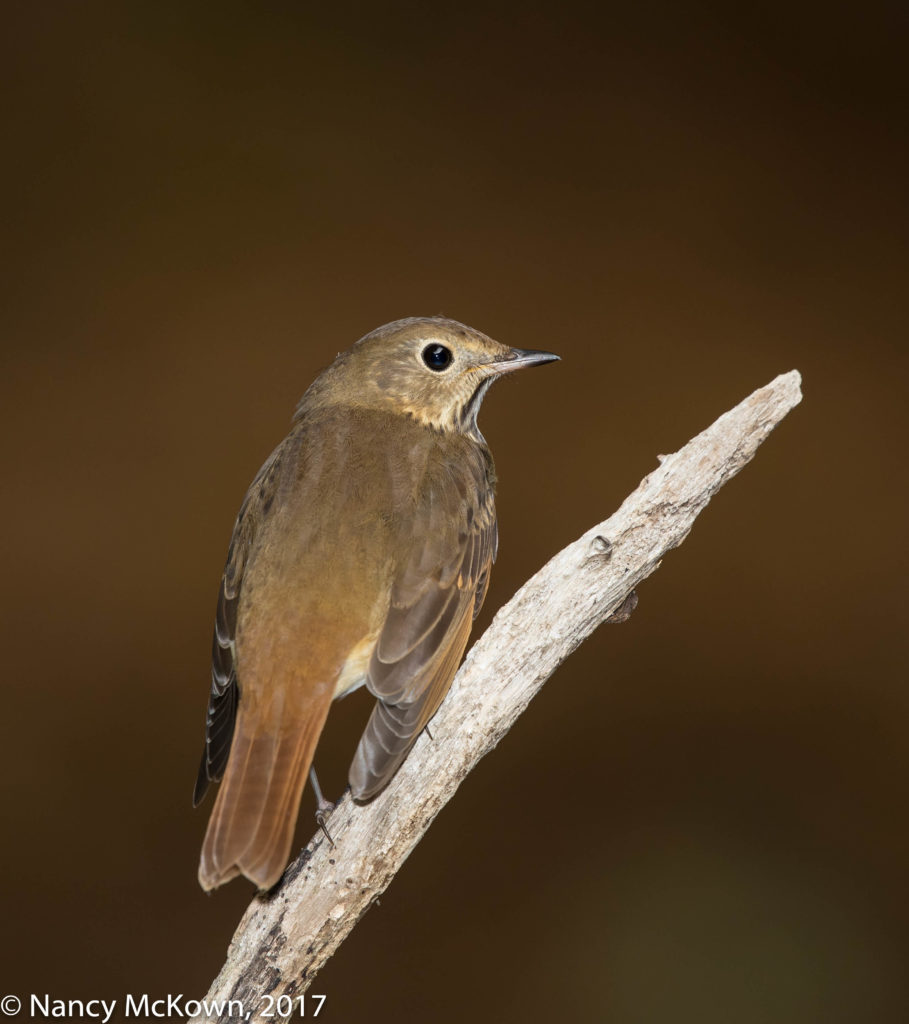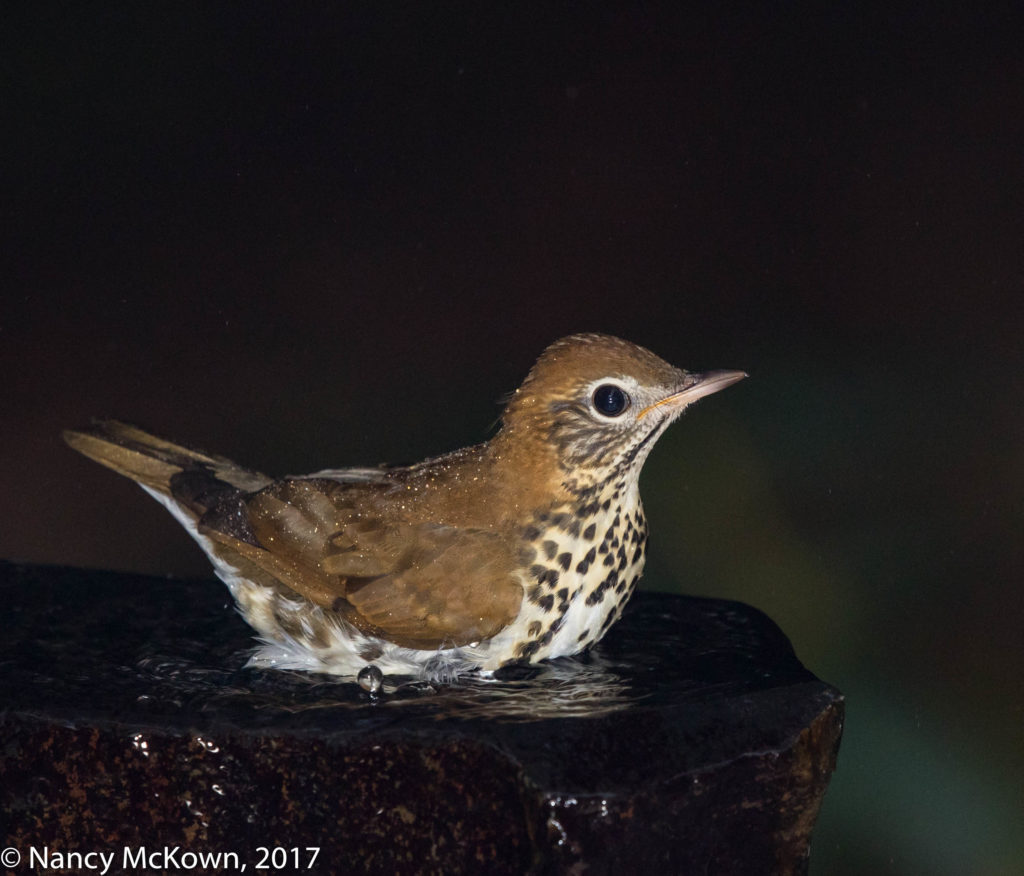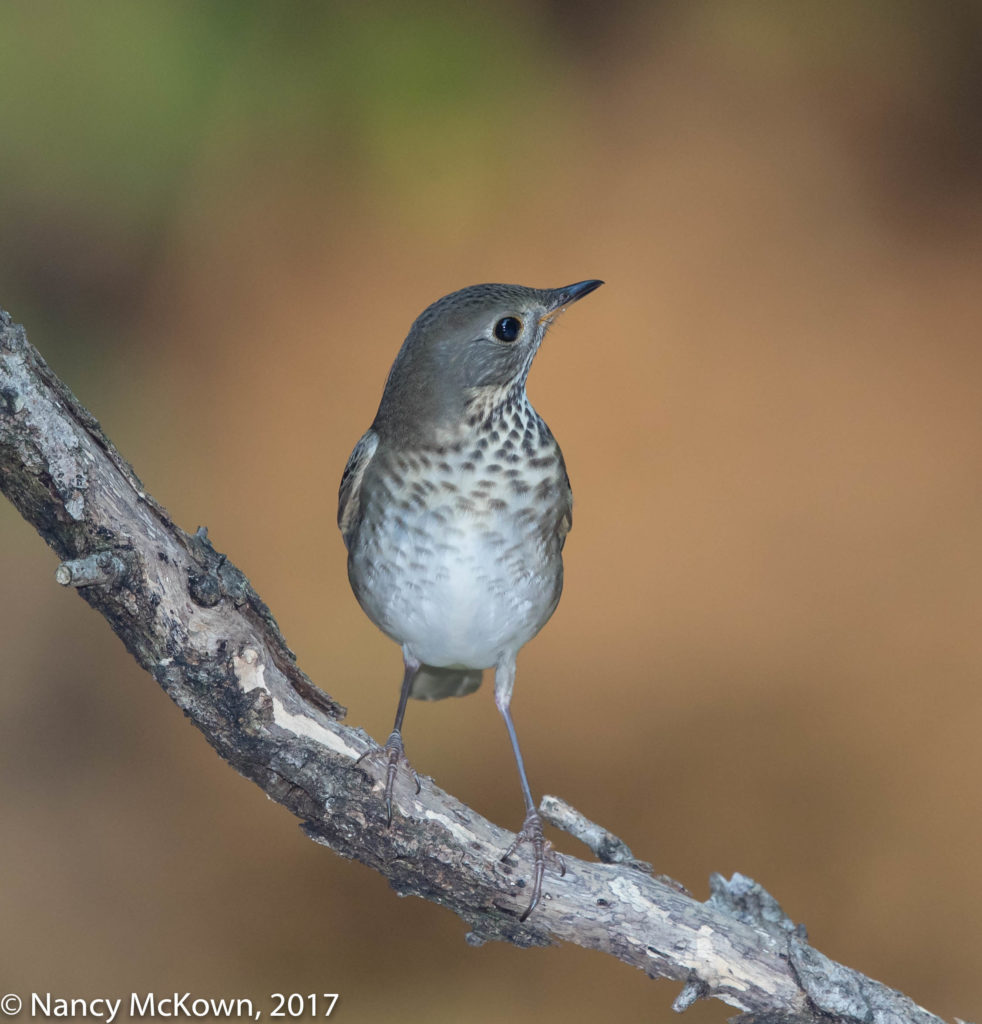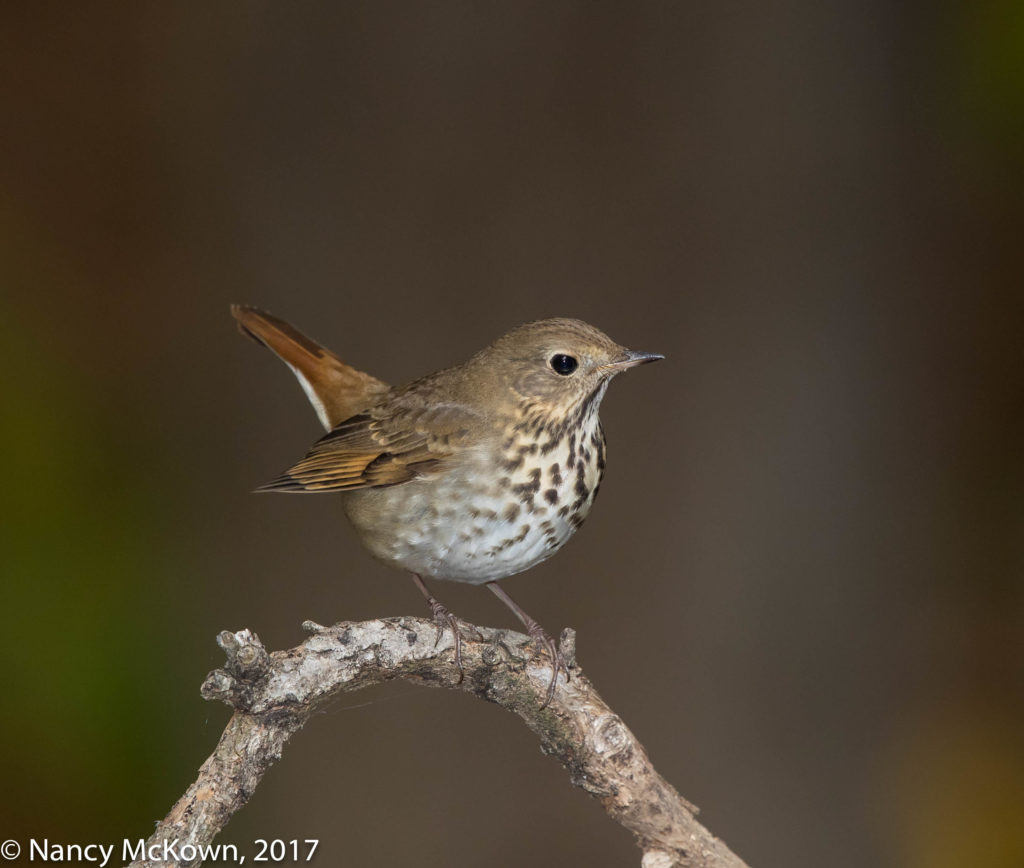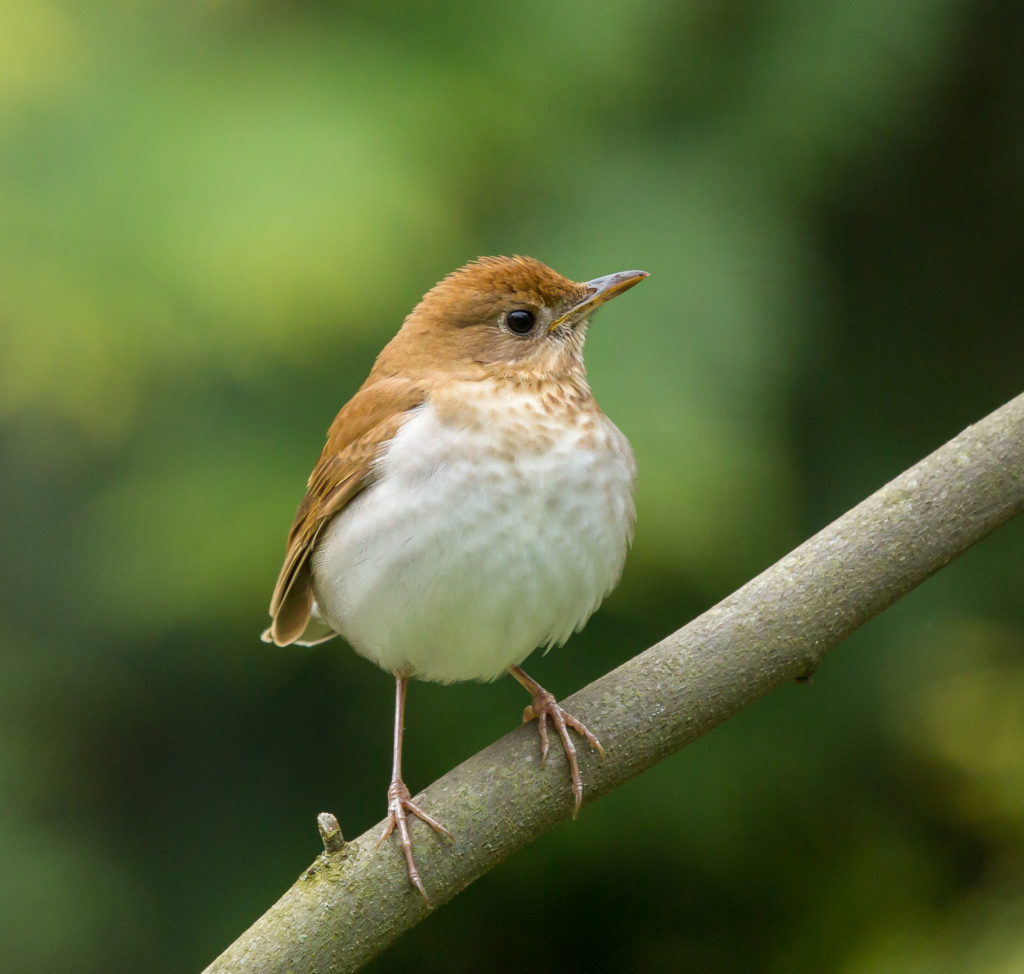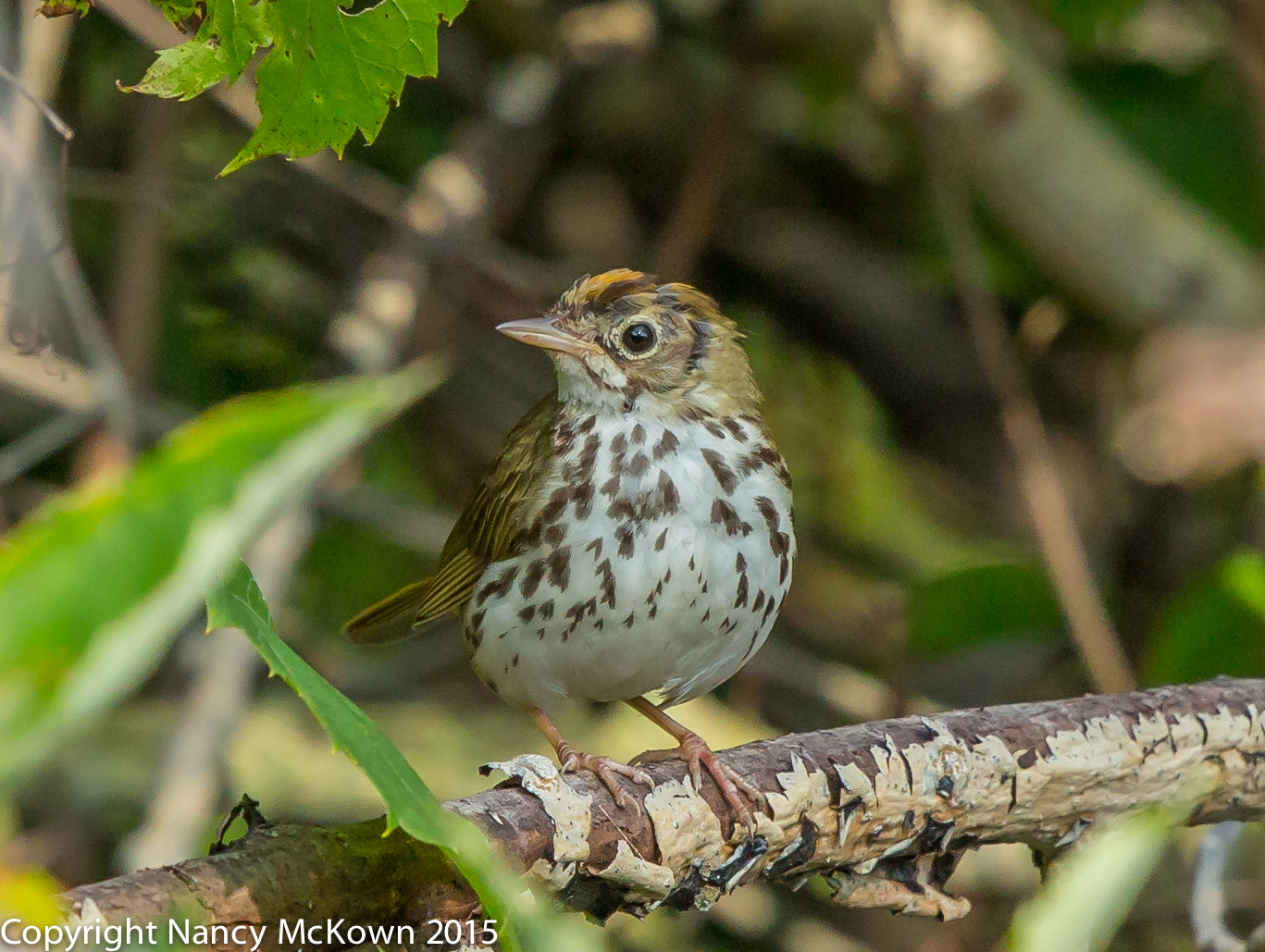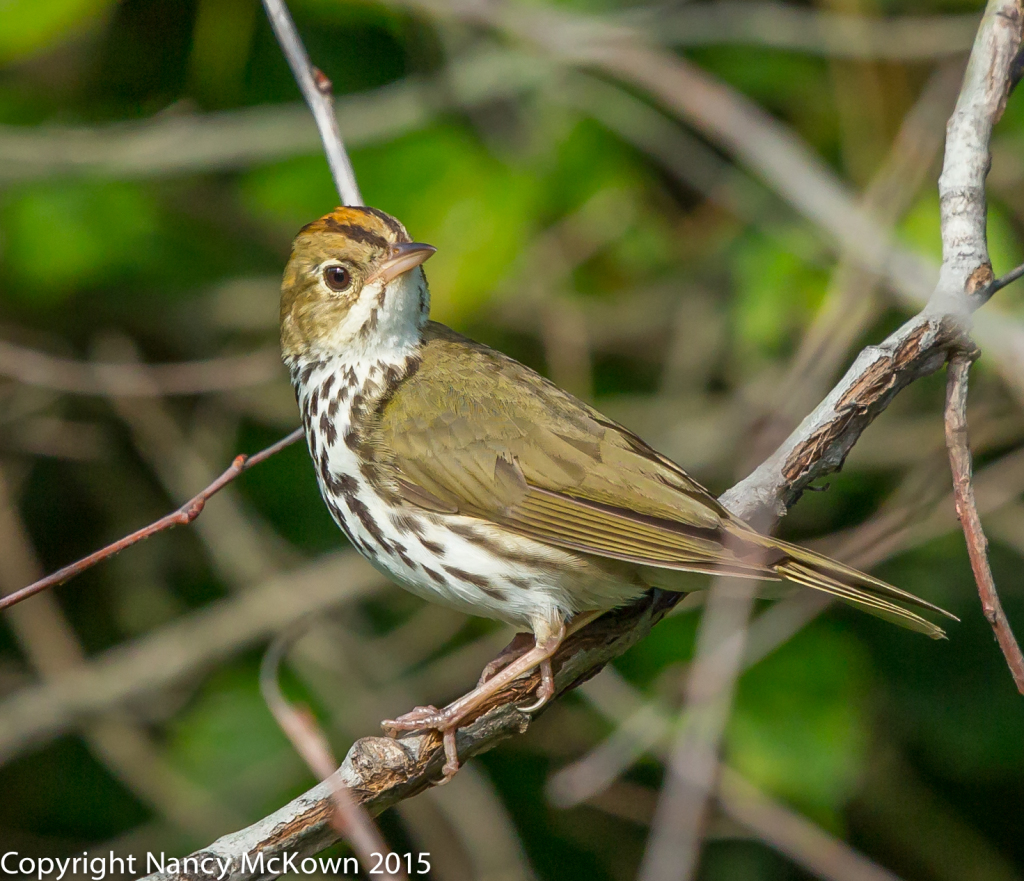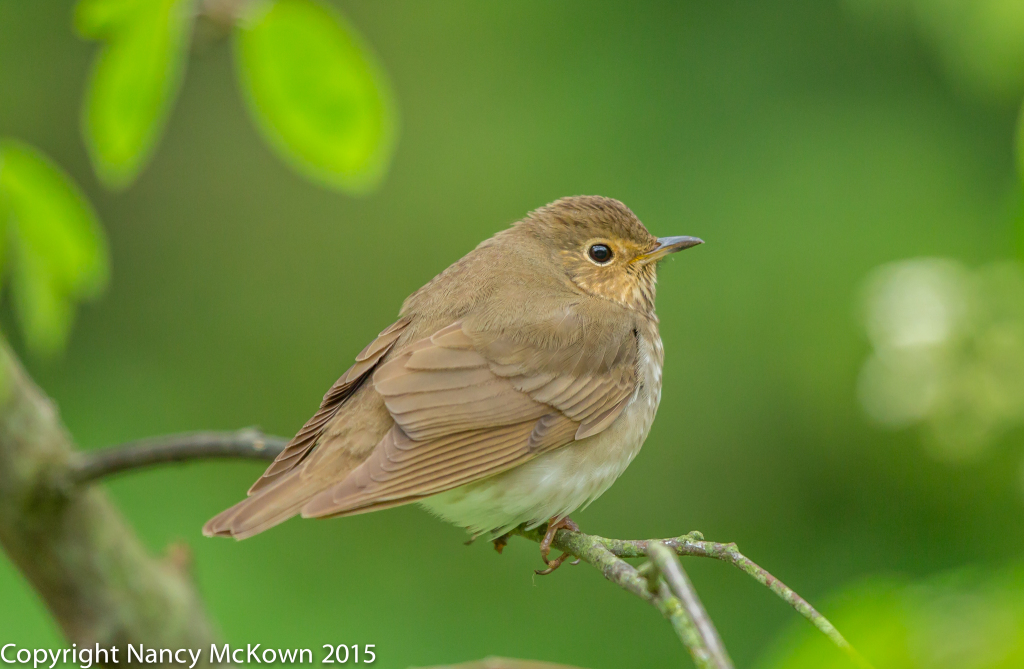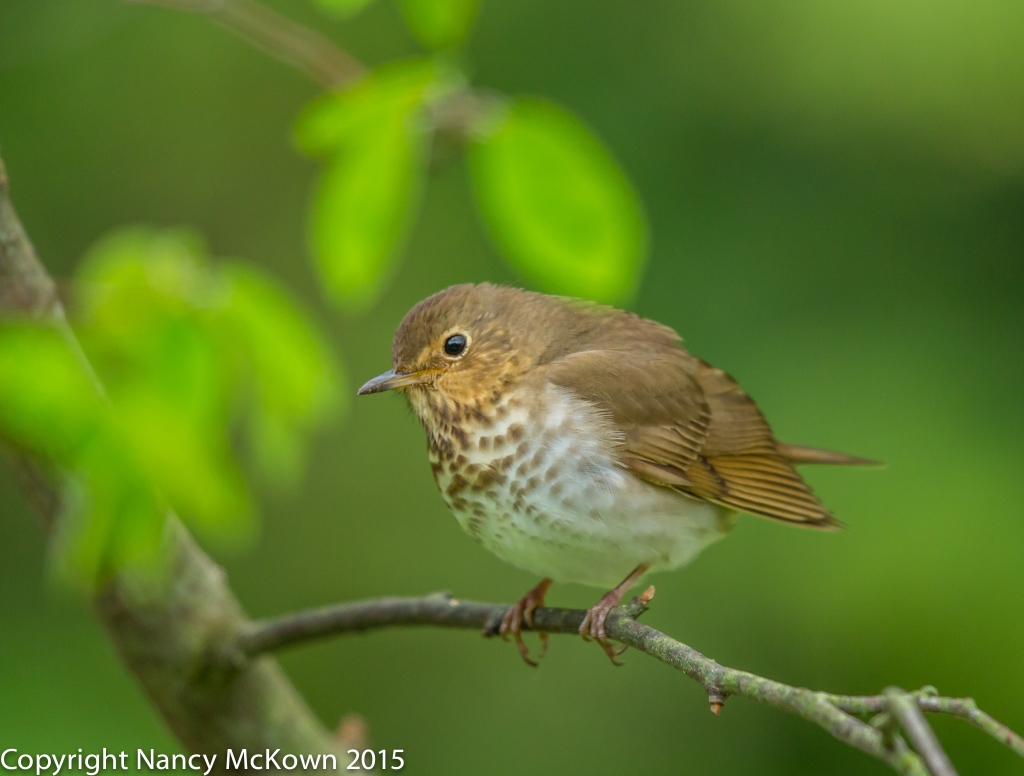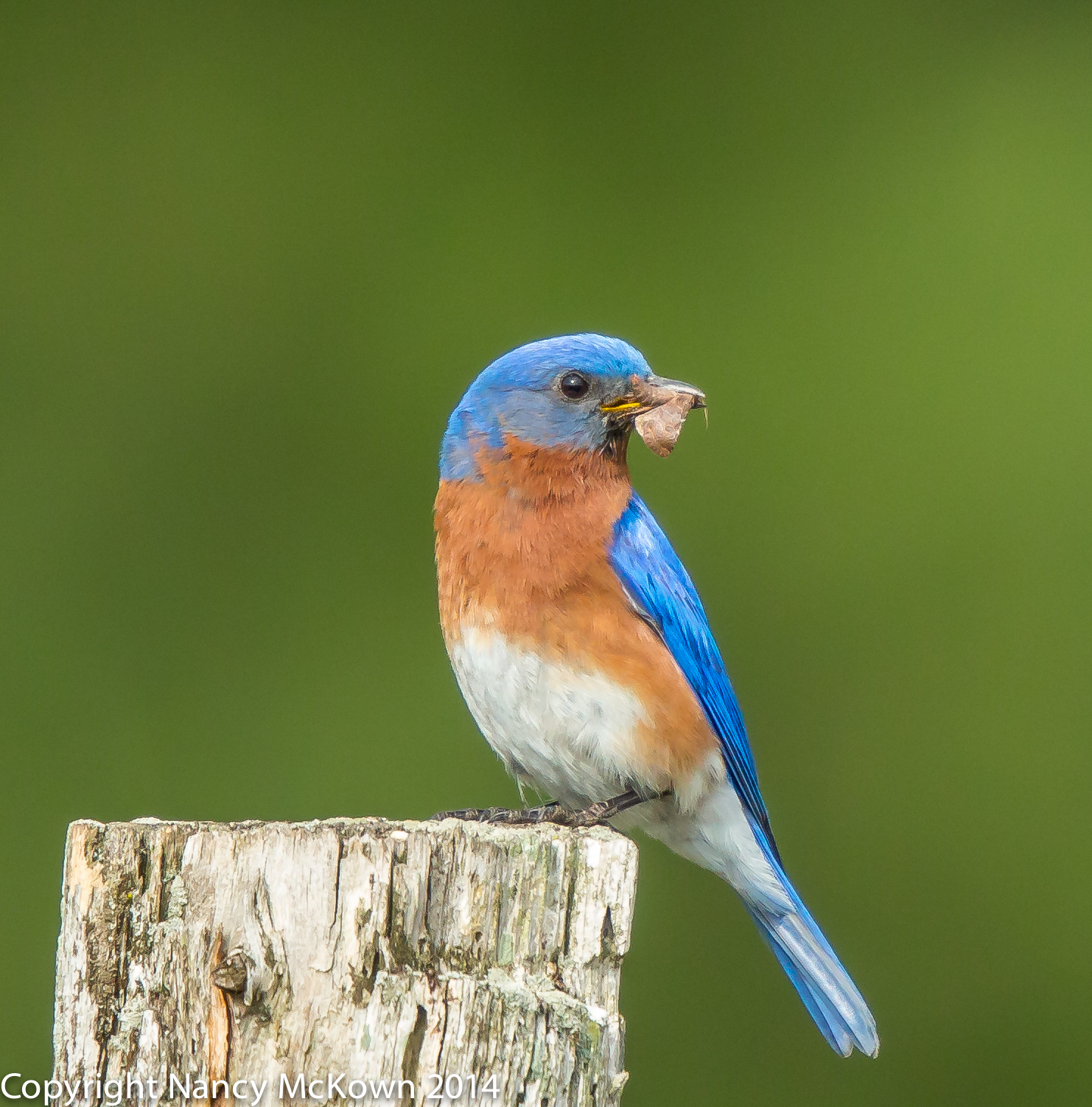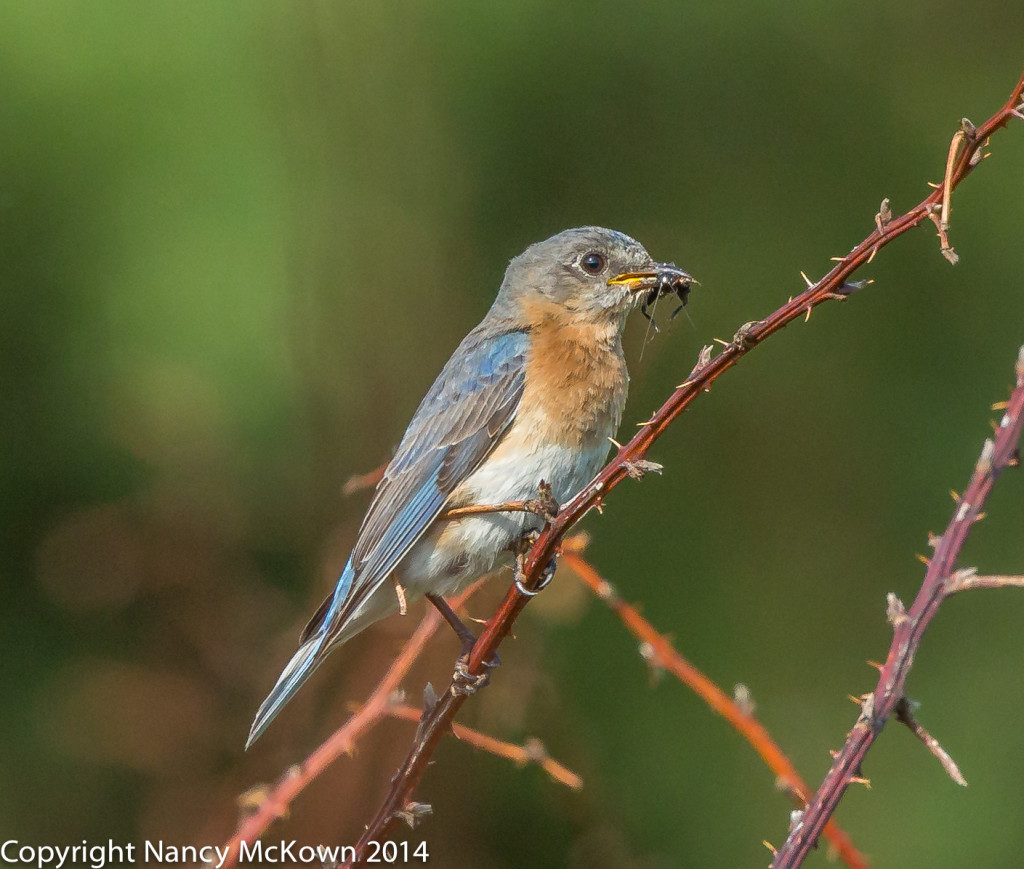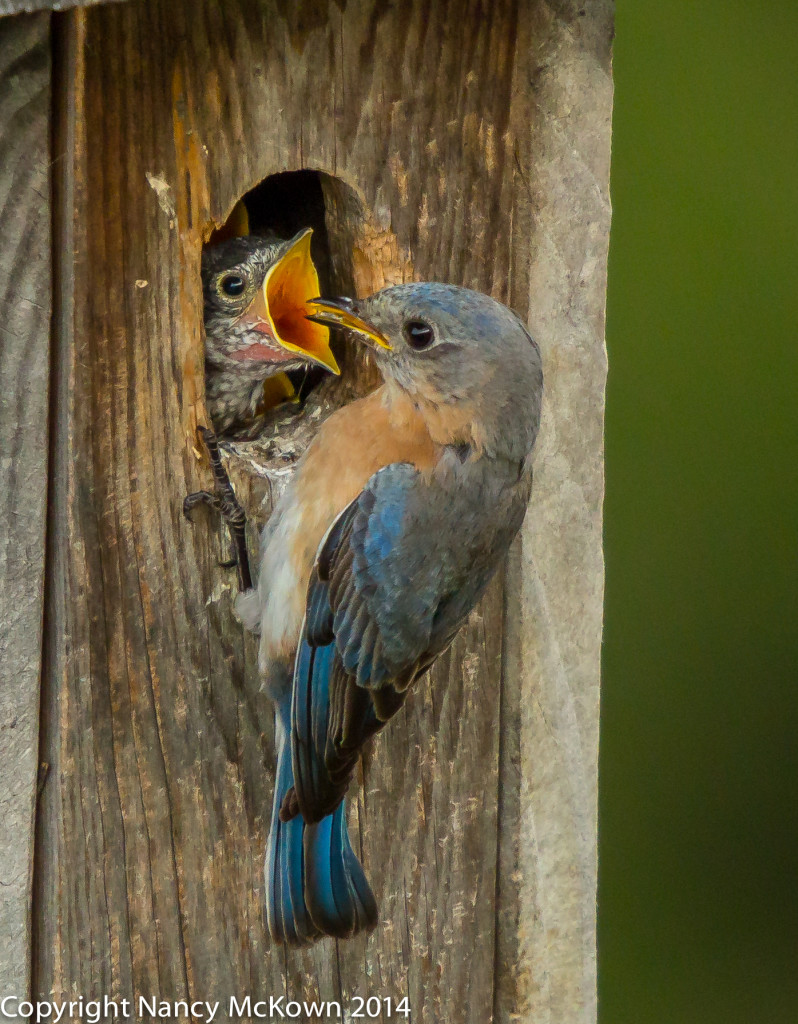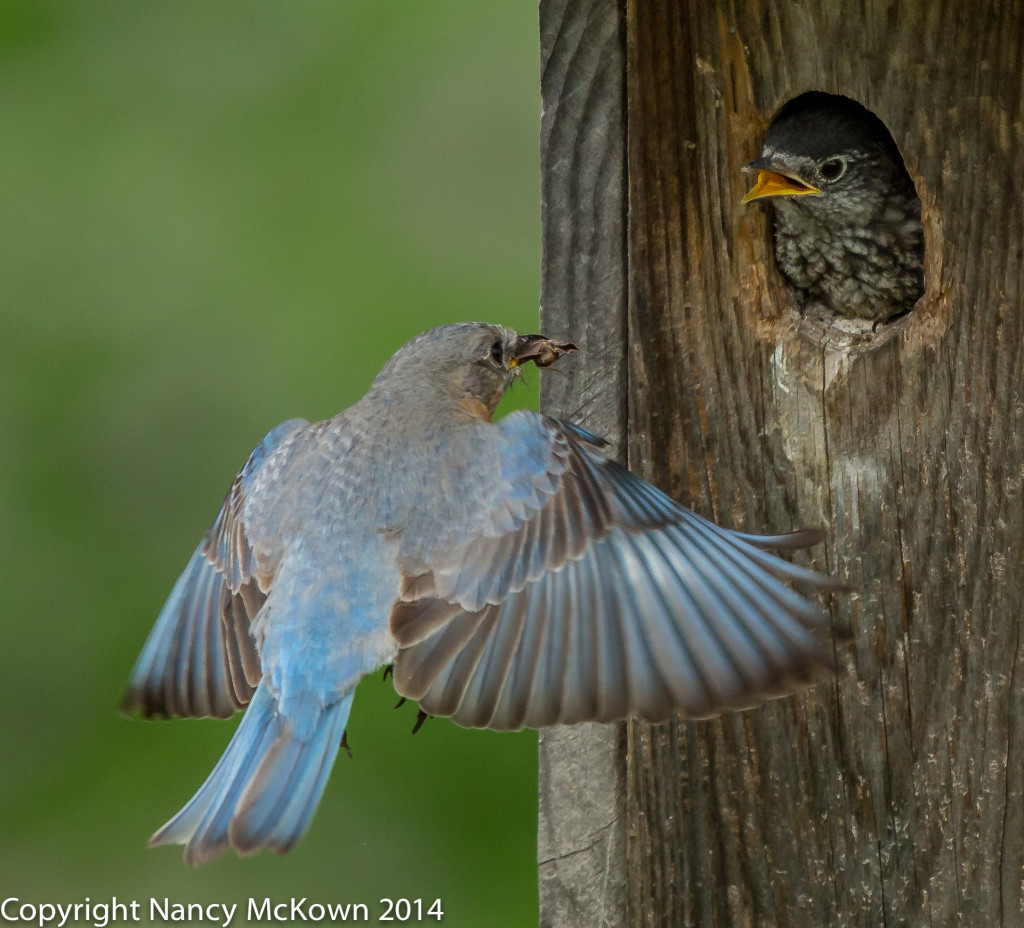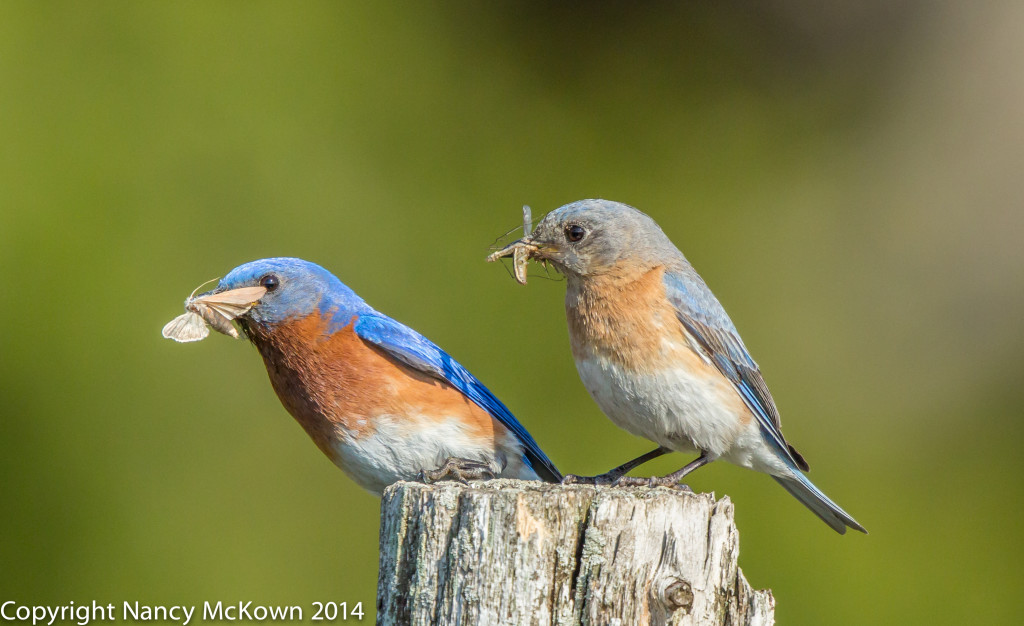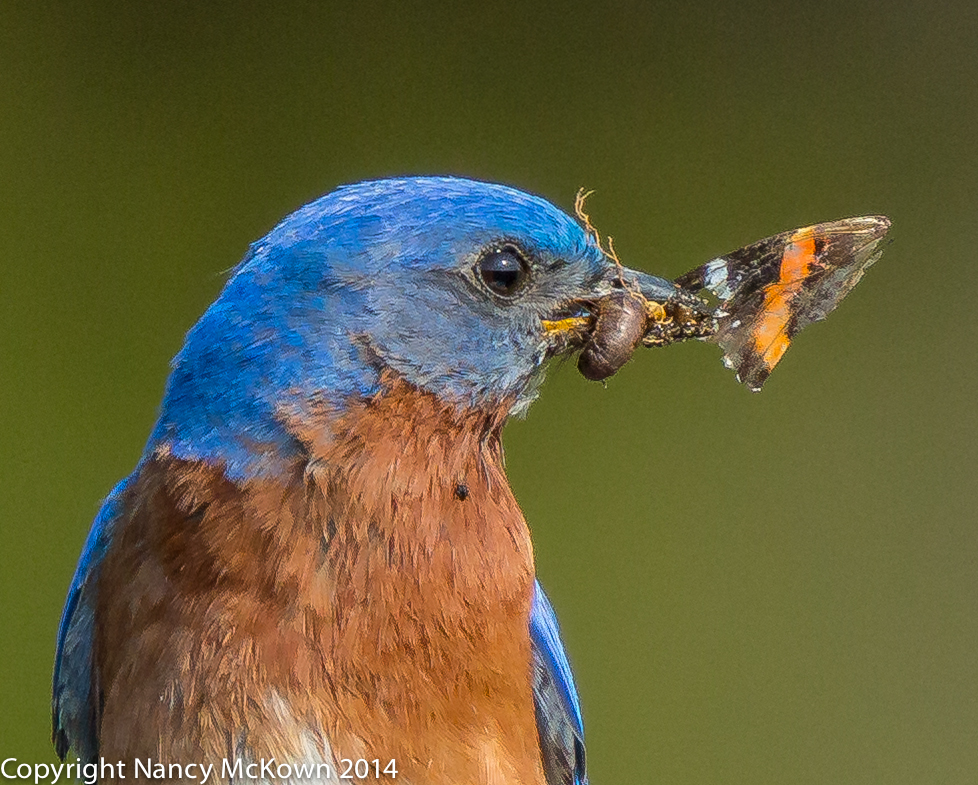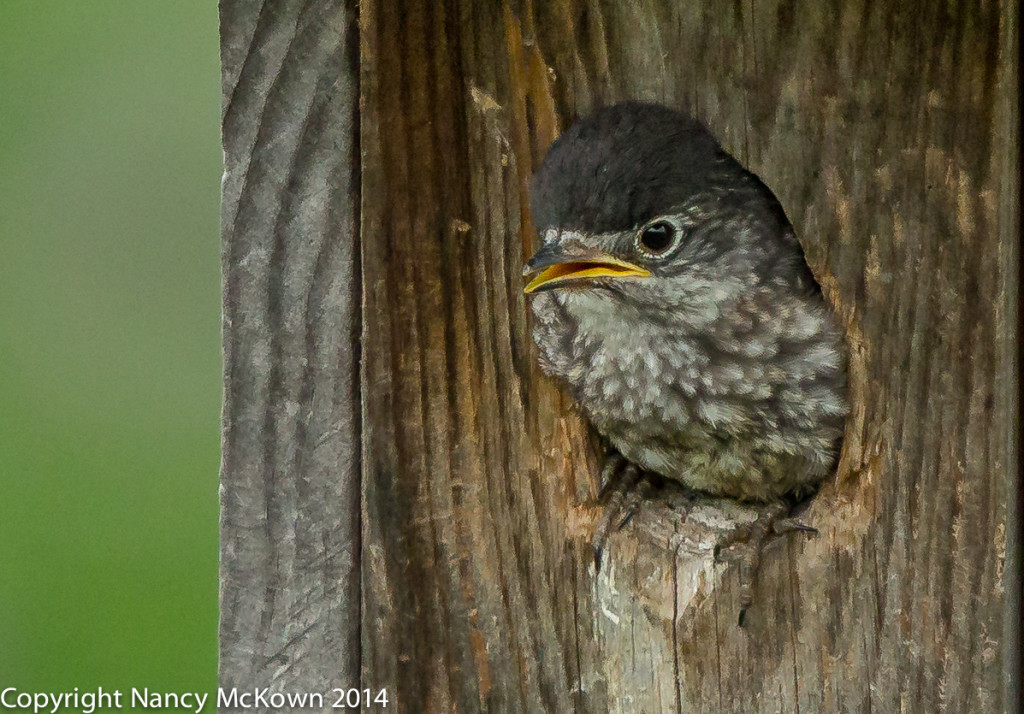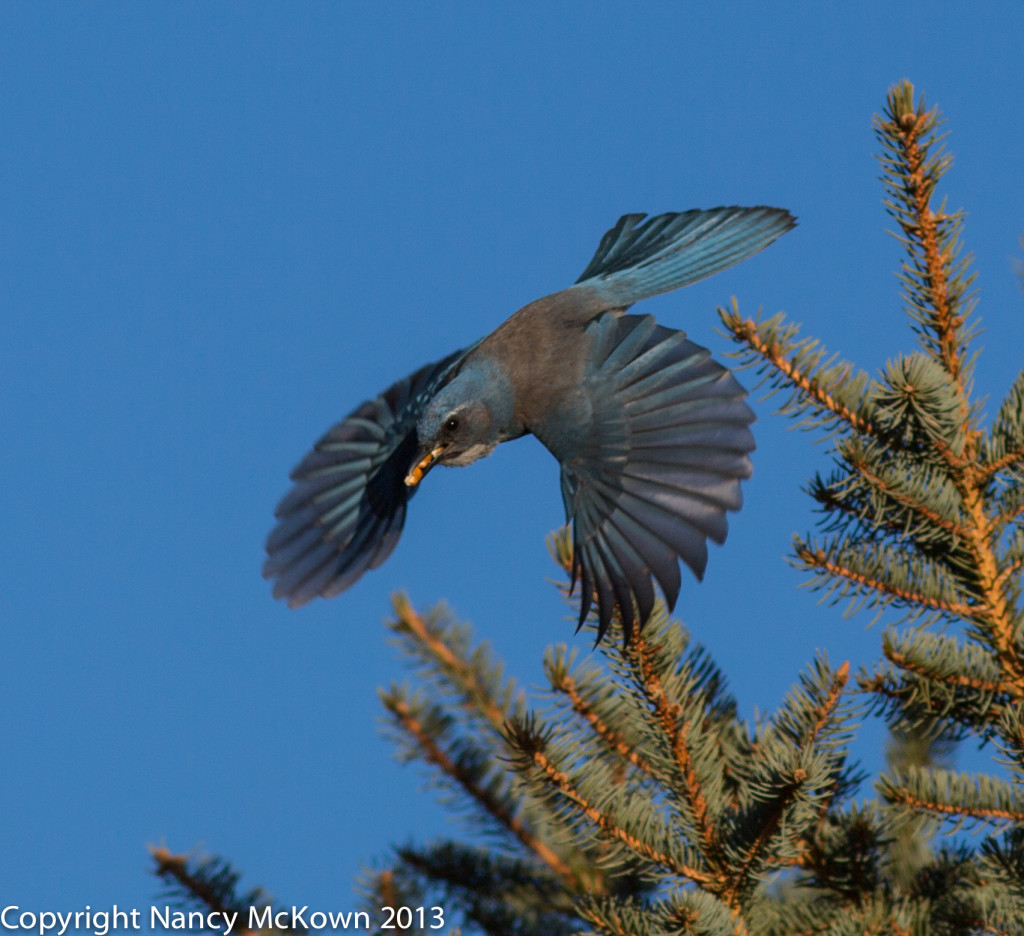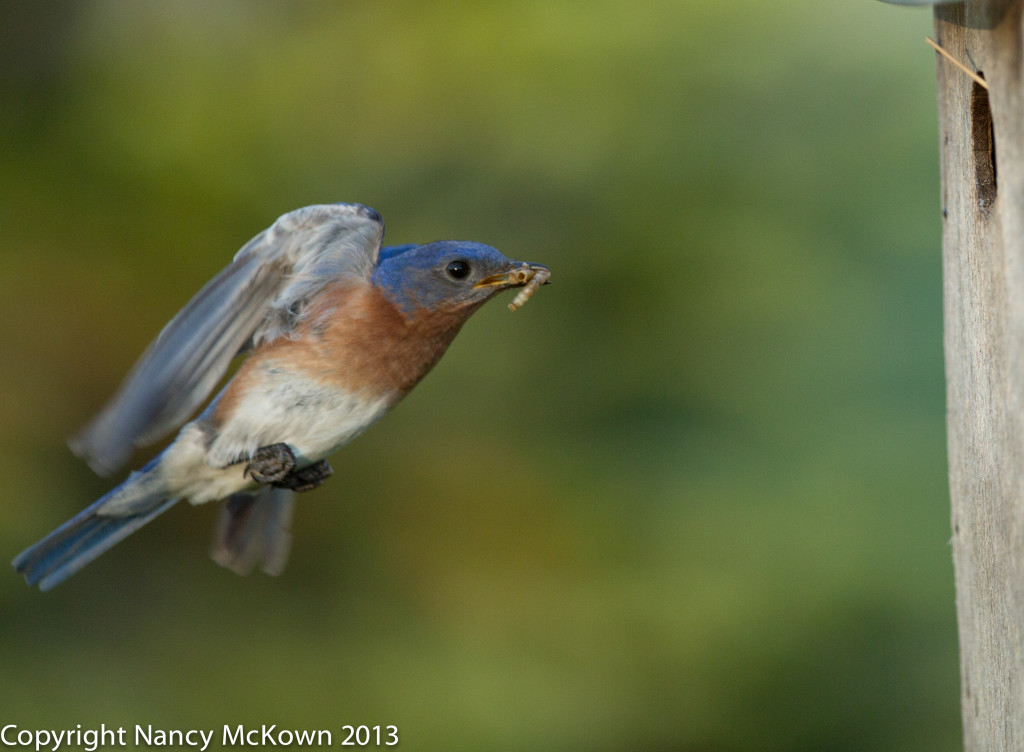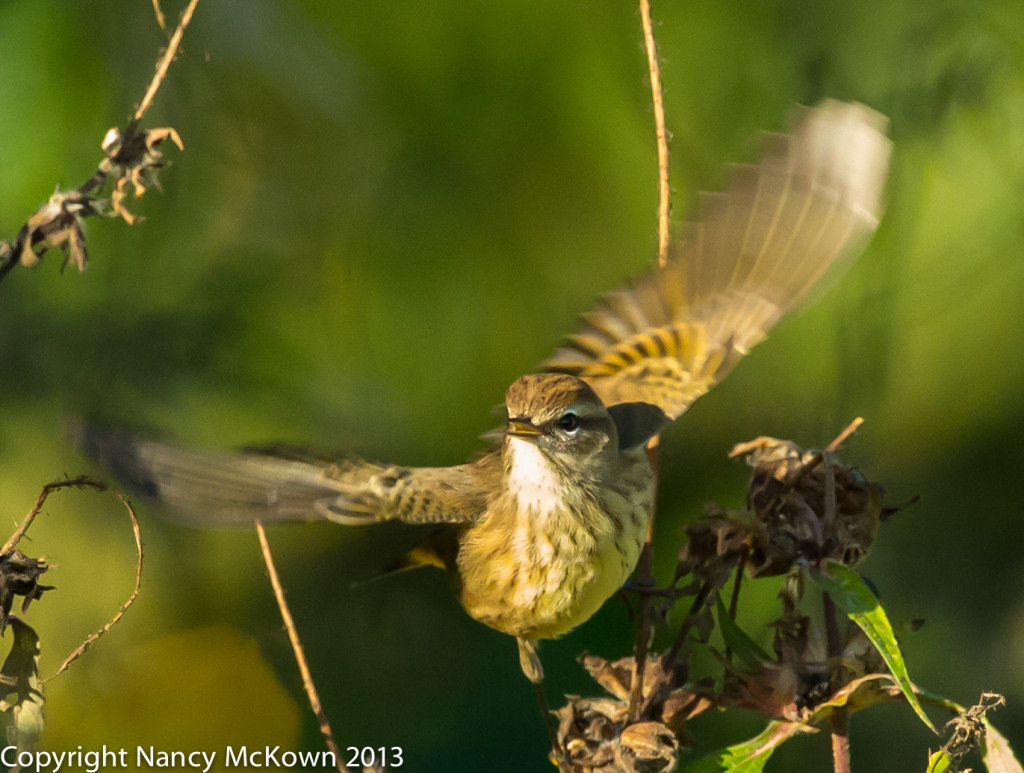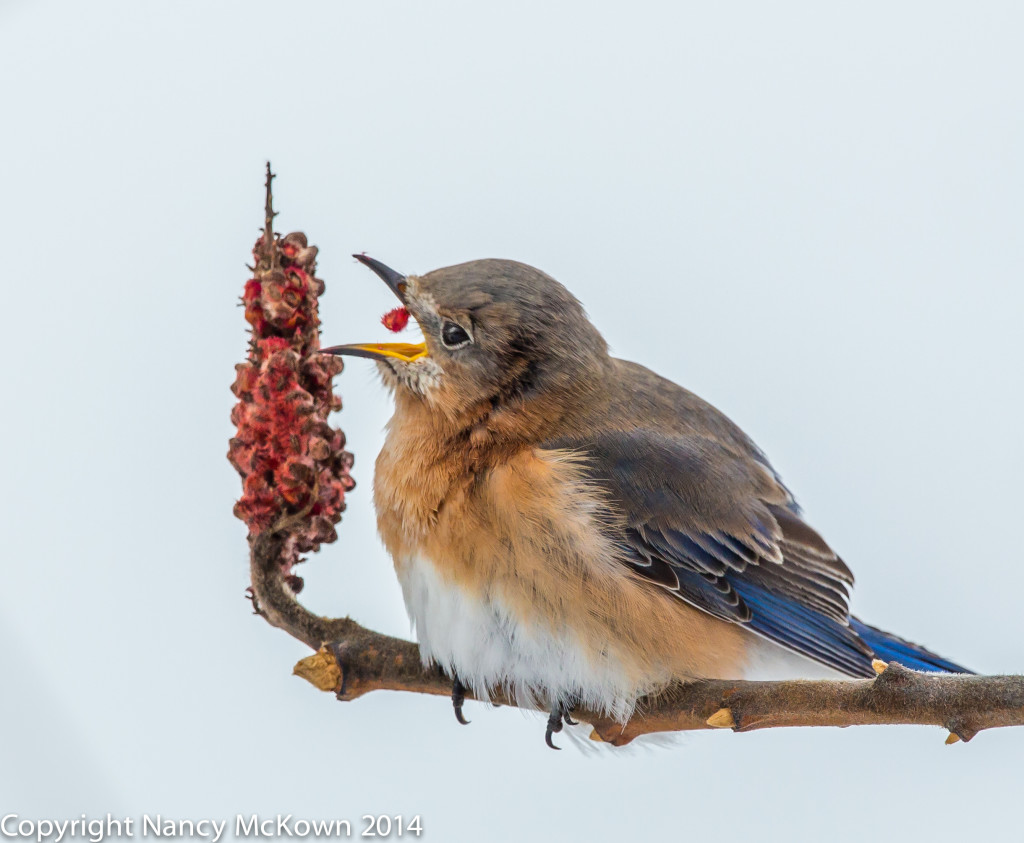Photographing Swainson Thrushes
It was a productive Fall season for Swainson Thrushes this year. Usually we see only two or three stop by on their migrating journey, but this year we counted half-dozen or so bold and boisterous individuals competing for room at the fountain. They mostly came in the evening.
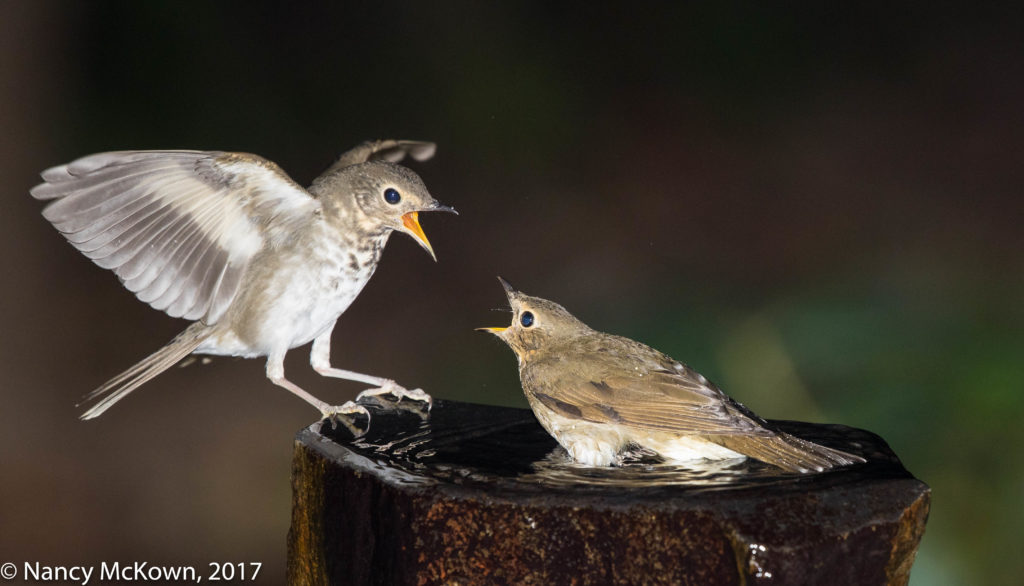
One Not Willing to Share.
ISO1000; f/9; 1/200 Second
The camera rig straddled the door jam…with one of the tripod legs stretching out to rest on the outdoor deck. The other two tripod legs were positioned inside the house. The early morning golden hour had long past. The fountain was still draped in shade- the garage blocking its light. As the sun rose over the roof, a bright patch blanketed the camera rig, making the my new oversized Hoodman camera eye cup ever so useful. Trees were still heavy with green leaves. At this mid-morning hour, the background was a good 2 stops darker than the fountain area.
I wondered what impact the stream of sunlight shining directly on the camera would have on my camera’s light meter. The camera’s LCD viewing monitor was compromised by reflection and glare, but I didn’t think light was sneaking in through the viewfinder. The ambient light near the fountain was not evenly spread…only a patch here and there shown through in the foreground and background. I took a couple test shots and noticed blinkies…a consequence of reflective and harsh surfaces throughout the frame. The light was transitioning fast.
Exposure Adjustments
I could turn the flash off and get by with sporadic light and most likely a high ISO….as high as 3000+ ISO. I decided that with uneven light prevailing, it was best to add a little flash fill. I turned the FEC to -2/3 (NOTE: Flash Exposure Compensation won’t work in complete manual mode, so I turned on Auto ISO. Alternately, I could choose to use one of the semi-automatic setting like TV or AV or perhaps even Program Mode.).
The Thrushes were moving so fast that by the time I adjusted exposure for a particular perch, that bird was long gone. Thrushes are ground feeding birds, and they commonly go where they can stay hidden amongst the low lying Hosta or within patches of late season Hellebore, Sedum, Rhododendron, Wood Poppies and bright Coleus. I pointed the lens downward near the wood chips.
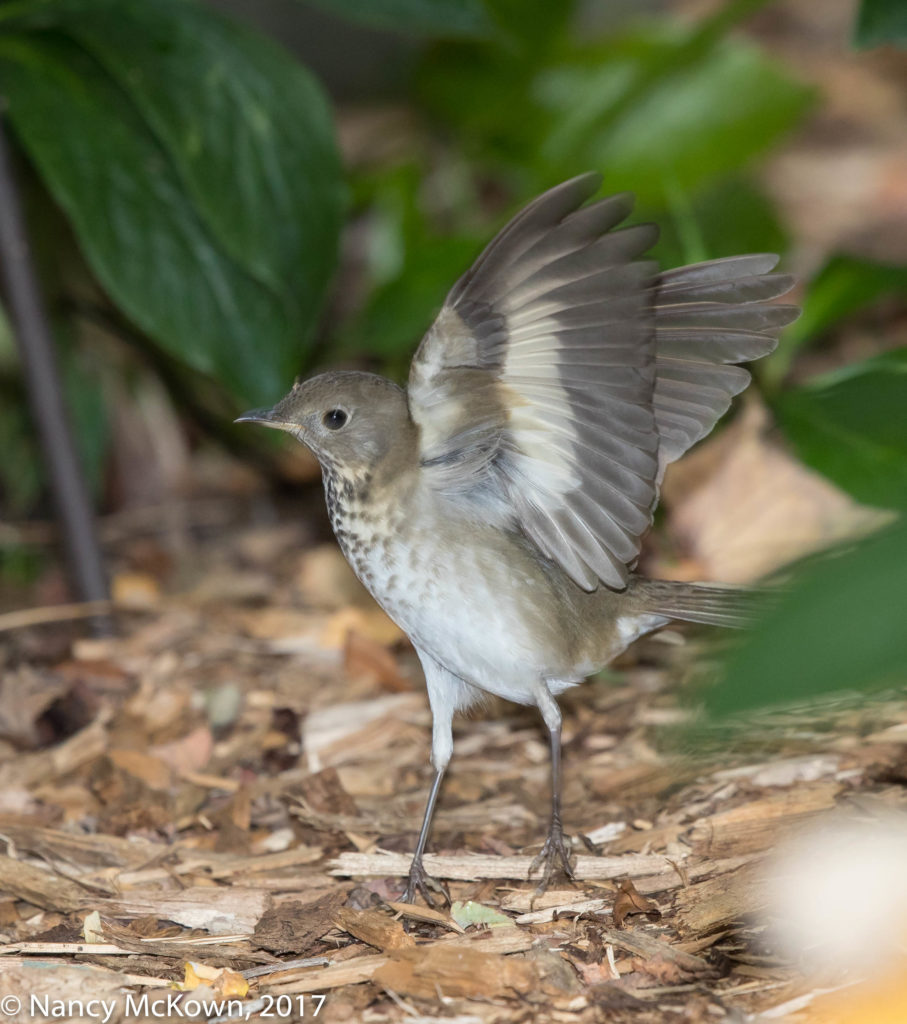
On the Ground, Wings up.
ISO800; f/7.1; 1/250 Second
Pointing the Lens Downward
I don’t often publish photos of birds foraging on the ground…. mainly because I prefer eye level shots and am too hesitant to get down at their level into a bestrewed tangle of debris. The lens had a difficult time trying to lock focus in this jumble. I could have taken the time to lower the camera….the tripod legs are easily adjusted, but any distraction would have sent the birds flying.
Thankfully, there was much less reflecting glare on the ground at that late hour. The wood chips upon which the thrushes landed offered a subtly colorful and complementary palate. All I had to do was wait and hope that a thrush would wander out from under the foliage. And this one did.
